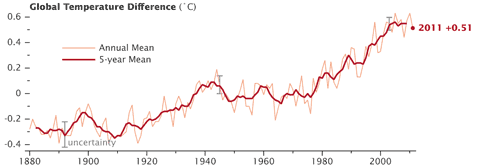 Two North American pieces I’ve read this week appealed to me for their directness about the export of coal. One, via James Hansen, was a letter from a Canadian group to Warren Buffet, informing him of their intention this Saturday to prevent coal trains from his BNSF railway company from passing through White Rock, British Columbia to deliver their coal to coastal ports for export to Asia. May 5th is the chosen date because it has been designated an international day of action by 350.org.
Two North American pieces I’ve read this week appealed to me for their directness about the export of coal. One, via James Hansen, was a letter from a Canadian group to Warren Buffet, informing him of their intention this Saturday to prevent coal trains from his BNSF railway company from passing through White Rock, British Columbia to deliver their coal to coastal ports for export to Asia. May 5th is the chosen date because it has been designated an international day of action by 350.org.
We are a group of citizens in British Columbia, Canada who are deeply concerned about the risk of runaway climate change. There is a broad scientific consensus that we must begin to sharply reduce greenhouse gas emissions this decade to avoid climate change becoming irreversible. At the same time, governments and industry are eager to increase the production and export of fossil fuels, the very things that will ensure climate change gets worse.
These two things are irreconcilable, and since we can’t dispute the scientific findings or change the laws of nature, those of us who care about the future must do what we can to reduce the production, export and burning of fossil fuels – especially coal.
Since we know what is at stake we feel a moral obligation to do what we can to help prevent this looming disaster. On Saturday May 5th that means stopping your coal trains from reaching our ports.
Our actions will be peaceful, non-violent, and respectful of others. There will be no property destruction. We are striving to be the best citizens we can. We will stand up for what we believe is right and conduct ourselves with dignity.

 The latest
The latest 
 I knew that climate scientists were on the receiving end of some nasty emails, but it was still a shock to read James Hansen’s
I knew that climate scientists were on the receiving end of some nasty emails, but it was still a shock to read James Hansen’s 
